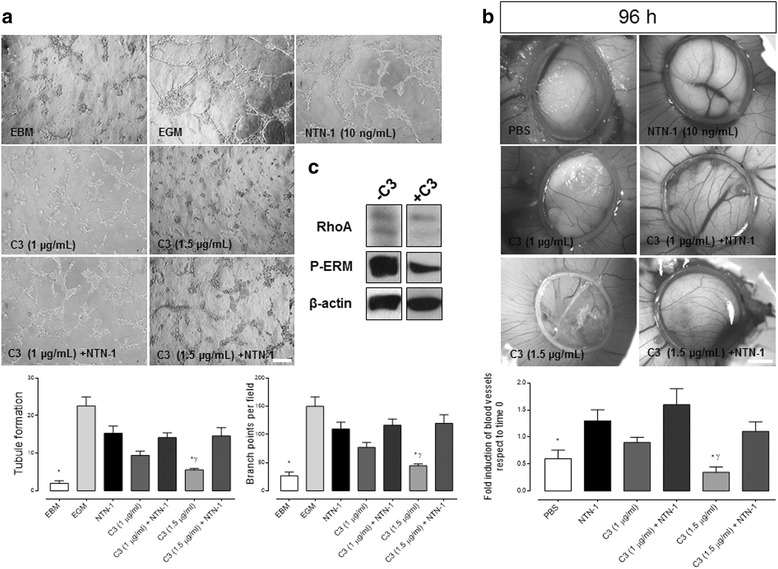Fig. 7.

RhoA/ROCK pathway contributes to angiogenesis in vitro and in vivo in a Netrin-1-independent manner. a Representative images of HUVEC tubule assay. Cells were exposed for 4 h to endothelial basal media (EBM), endothelial growth media (EGM) and exoenzyme C3 transferase (Cytoskeleton, Inc., 1–1.5 μg/mL), in absence or presence of recombinant human Netrin-1 (NTN-1) (10 ng/mL). The graphs shown below represent quantified data corresponding to the mean ± S.E.M. [n = 3, * p < 0.05 vs. NTN-1, γ p < 0.05 vs. C3 + NTN-1], scale bar = 15 μm. b Representative images of distinct experimental approaches on CAM: PBS (20 μL), NTN-1, 10 ng/mL) and exoenzyme C3 transferase (Cytoskeleton, Inc., 1–1.5 μg/mL) (scale bar = 1 mm). The graph represents quantification of angiogenesis after 4 days of incubation in experimental conditions as indicated. Data correspond to the mean ± S.E.M. (n = 4, * p < 0.05 vs. NTN-1, γp < 0.05 vs. C3 + NTN-1). c Western blot for RhoA, phospho-ezrin-radixin-moesin (P-ERM, index of activated RhoA/ROCK signaling) and β-actin in primary culture of HUVEC (n = 1) in absence (−) or presence (+) of exoenzyme C3 transferase (Cytoskeleton, Inc., 1.5 μg/mL)
